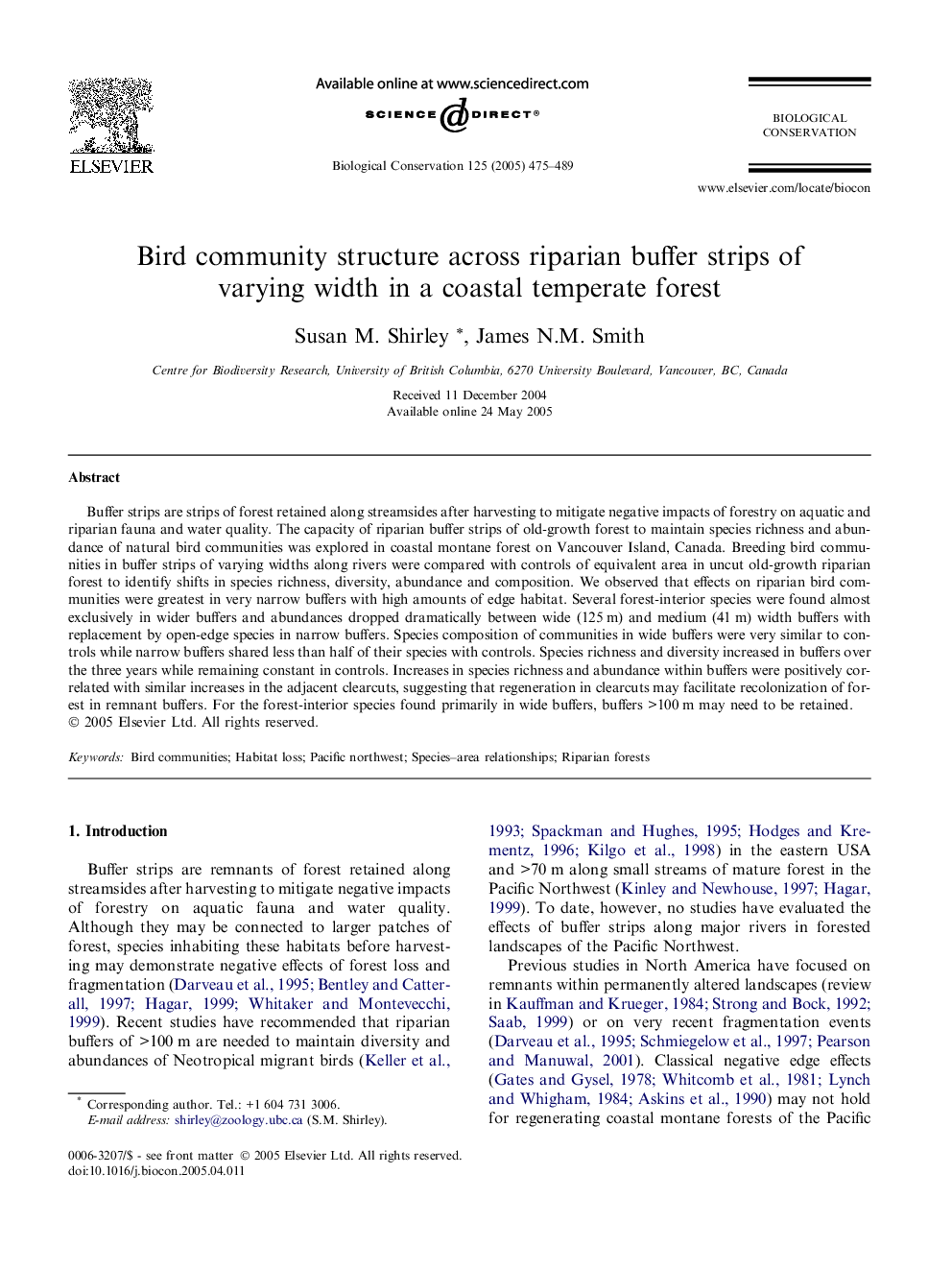| Article ID | Journal | Published Year | Pages | File Type |
|---|---|---|---|---|
| 9446064 | Biological Conservation | 2005 | 15 Pages |
Abstract
Buffer strips are strips of forest retained along streamsides after harvesting to mitigate negative impacts of forestry on aquatic and riparian fauna and water quality. The capacity of riparian buffer strips of old-growth forest to maintain species richness and abundance of natural bird communities was explored in coastal montane forest on Vancouver Island, Canada. Breeding bird communities in buffer strips of varying widths along rivers were compared with controls of equivalent area in uncut old-growth riparian forest to identify shifts in species richness, diversity, abundance and composition. We observed that effects on riparian bird communities were greatest in very narrow buffers with high amounts of edge habitat. Several forest-interior species were found almost exclusively in wider buffers and abundances dropped dramatically between wide (125Â m) and medium (41Â m) width buffers with replacement by open-edge species in narrow buffers. Species composition of communities in wide buffers were very similar to controls while narrow buffers shared less than half of their species with controls. Species richness and diversity increased in buffers over the three years while remaining constant in controls. Increases in species richness and abundance within buffers were positively correlated with similar increases in the adjacent clearcuts, suggesting that regeneration in clearcuts may facilitate recolonization of forest in remnant buffers. For the forest-interior species found primarily in wide buffers, buffers >100Â m may need to be retained.
Related Topics
Life Sciences
Agricultural and Biological Sciences
Ecology, Evolution, Behavior and Systematics
Authors
Susan M. Shirley, James N.M. Smith,
